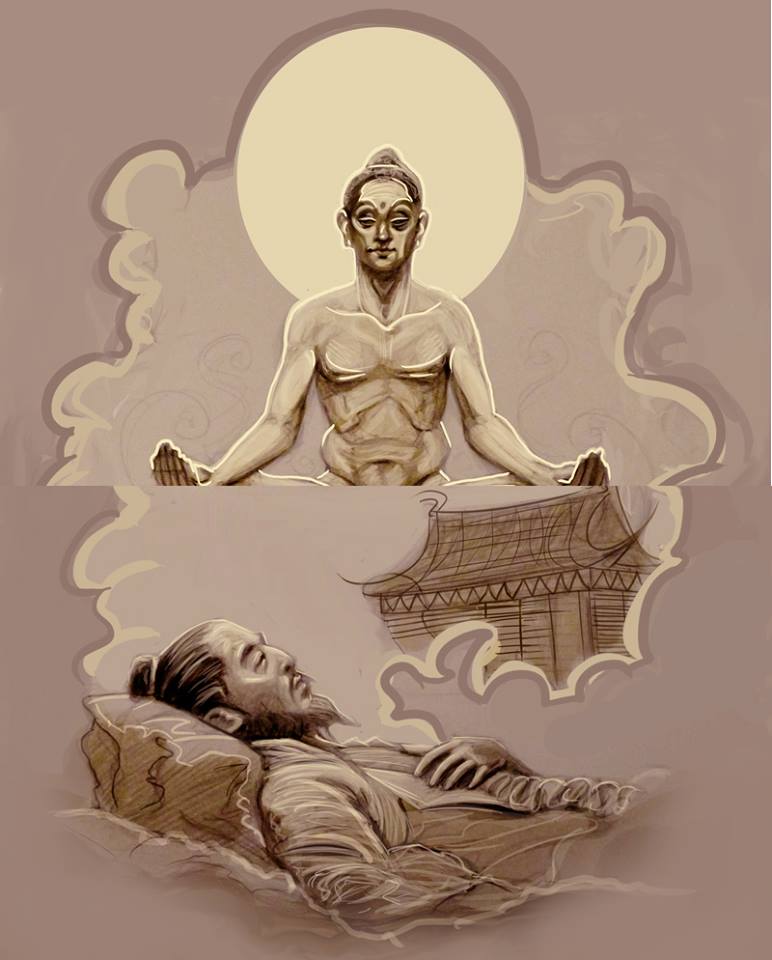“We saw the most extraordinary sight,” a disheveled Emperor Ming would exclaim to his courtiers at daybreak. A vision of a radiant, golden… man? A deity? Something like that. He had no idea what it could compare to. It certainly looked like a human, with some unusual features like curled tufts of hair in the shape of sea shells. And those eyes, those unearthly, almost ludicrously tranquil eyes that indicated a world beyond even the worlds of the spirits and ancestors! The Daoist priests couldn’t ascertain the origin of this golden man. But some astute advisors suggested that the being in his dream seemed to physically resemble men from the land of yogis and ascetics to the west. Murmurs began to circulate at court about some earthen-robed men who had followed the camels from Parthia and Kushan into Luoyang.
The son of heaven’s eyes brightened. “We dreamed this dream and saw this golden man after they arrived. It can’t be a coincidence. Where can We find these monks? Locate them at once. They will show Us their Way.”
It was then in the middle of the first century of the Common Era. The Way of the originally foreign faith, which had left faint and unfamiliar echoes even before the Han dynasty, would soon become the Way of the courtly Dharma in China – and rapidly spread from its imperial confines to the common subjects of Tianzi. It was the beginning of when China saw Buddhism, and Buddhism saw China. Their worlds would never be the same.
Discover more at Buddhistdoor Global, your source for Buddhist inspiration and journalism. And join our BDG group on Facebook to see more postcards!

